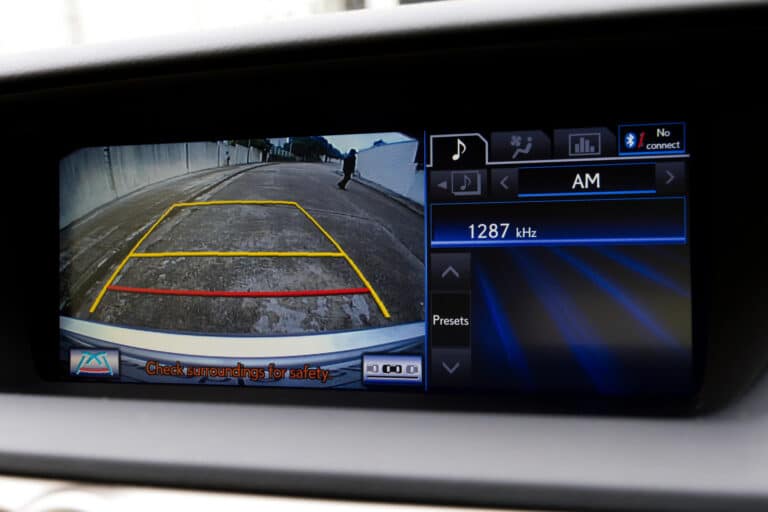Nikon AF Vs. AF-S Lenses – Everything You Need To Know
Autofocus eliminates the hassle of manually twisting the lens focusing ring. Nikon lenses have been using two different autofocus technologies for many years.
This article will look at the Nikon AF vs. AF-S lenses and everything you need to know about them.
Types of Nikon Lenses
Nikon manufactures two lenses: Autofocus (AF) and autofocus with a silent wave motor (AF-S). AF lenses are older than the AF-S lenses and work using the manual mode only.
This guide looks at Nikon AF vs. AF-S lenses and everything you need to know about them.
The History of Nikon AF Lenses and AF-S Lenses
To better understand the difference between these two lens types, we need to look at their history and how they function. Here is a bit of the history of their autofocus mechanism:
The History of Nikon AF Lenses
Nikon started manufacturing Nikon AF lenses in 1986. These were the first Nikon lenses with autofocus, and they all featured an AF label. Back then, the functioning of the autofocus mechanism was simple.
It consisted of a drive in the camera and a reducer on the lens. The system works by interlocking a fine spiral screw thread on the lens with another fine spiral for mounting the lens on the camera body.
It works like a nut and a screw, allowing the camera to determine the correct subject distance. Then, the camera drive rotates the lens reducer for autofocus.
The camera utilizes several focus sensors to detect whether the various parts of the image are correctly focused and then turns the focusing screw accordingly.
AF lenses feature a CPU that allows the camera to communicate with the lens electronically and detect the aperture and focal length of the lens.
When manually focusing an AF lens on an AF camera, you will need to manually change the AF switch from the AF to the M position. When you switch to the M position, you retract the screwdriver to rotate the focus ring freely.
When using a manual focus mode or when the camera doesn’t have a focus motor, the camera autofocus system will help you know if the image is in focus using the viewfinder confirmation dot.
The few manual focus lenses feature a CPU function like the manual focus mode on AF lenses when using AF-S or AF-capable cameras.
Some of the Nikon cameras that feature a screw thread include D3, D810, D750, D700, D7100, D7000, D300, D200, D90, D80, D70, and D50.
The History of AF-S Lenses
AF-S is an abbreviation for autofocus single, which is also known as single area AF. These lenses use their built-in focusing motor instead of the autofocus motor that comes with the camera.
They are the most recent lenses to be manufactured by Nikon. Although the initial AF system functions well, Nikon introduced the AF-S lenses in 1998 to enhance the autofocus functionality, making it faster and quieter than the AF lenses.
The autofocus functionality of some AF-S lenses is almost noiseless. The main difference between these two Nikon lens types is that Nikon AF uses a drive inside the camera body while the Nikon AF-S uses a drive inside the lens.
In Nikon AF-S, the camera sends signals to the lens via the contacts. The drive in the lens helps to change the optical circuit to the correct distance.
What is the Silent Wave Focus Motor in AF-S Lenses?
The Silent wave motor is an ultrasonic motor used in Nikon lenses to enhance autofocus functionality in AF-S lenses.
The advanced technology in these motors changes the traveling waves into rotational power that helps focus the optics. This improves the accuracy, speed, and quietness of the autofocus functionality.
Different third-party manufacturers that manufacture AF-S compatible lenses like Sigma, Tokina, and Tamron have different names for this type of autofocus motor.
In place of an aperture ring, these lenses come with a manual focus ring and a switch that allows you to switch between manual focus and autofocus.
In some cheaper options, this switch disconnects the focus motor mechanically from the focus ring, allowing you to rotate the focus ring much more quickly and safely. The autofocus rotates with the focus ring in this lens type, and the autofocus switch changes between M and A.
That means if you turn off autofocus from the camera, it will only turn off the autofocus functionality but doesn’t disconnect the focus ring from the motor. The switch on some high-end Nikon lenses switches between M and M/A.
The M/A option allows you to adjust the focus well in the autofocus mode manually. It means you can turn off autofocus through the menu system or with a switch on the camera and leave the lens switch in the M/A position without stressing the autofocus motor.
Keep in mind that moving the lens’s switch to the M position turns off autofocus. If you rotate the focus ring fully to the right on older Nikon lenses, you will change the focus to Infinity. On newer Nikon lenses rotating the focus ring fully to the right makes the lens focus a bit beyond Infinity.
That means that you will have to use manual focus or autofocus to make the lens focus to Infinity. Keep in mind that this can be an issue in astrophotography where the light might not be sufficient for the autofocus sensors.
Also, the cheaper AF-S Nikon lenses don’t have a distance scale, and you might not know the focus distance of the lens.
Can Nikon AF Lenses Work With Newer Camera Models of Nikon?
Nikon made it impossible for newer camera models to be used with AF lenses due to Nikon’s commercial interests. If you start with a D40 SLR camera, all budget cameras are manufactured with AF-S autofocusing functionality only, so they don’t have a screw thread.
Some of the early cameras include D5500, D5300, D3400, D3300, D5200, D3200, D5100, D5000, D3100, D3000, D60, D40x and D40. Keep in mind that all Nikon digital cameras work with AF-S lenses.
For AF lenses, you must have a kit lens that comes with mount screws to have autofocus. That means you can only use older lenses with manual mode autofocus. Nikon makes money from the new lenses due to the increased demand for new lenses in the budget DSLRs.
For instance, if you want to purchase a prime portrait lens for use with D5000, you can’t have autofocus on the cheaper 50mm f/1.8 AF lens. You will have to purchase the more expensive 50mm f/1.4 AF-S or 35mm f/1.8 AF-S.
Regardless of the commercial interests of Nikon, newer lenses are far much better than older lenses and are worth the price.
What are the Benefits of Using AF-S Lenses?
Considering that AF-S lenses are the latest Nikon lenses, they have some benefits over AF lenses. Here are some of the benefits:
- These lenses are compatible with all modern cameras
- The lenses feature the latest technology, and you don’t have to worry about future compatibility
- The autofocus performance is fast, accurate, and noiseless
Final Thoughts
AF lenses are the older Nikon lenses, while the AF-S lenses are the new Nikon lenses that feature silent wave motors for noiseless autofocus. These two types of Nikon lenses come with varying features that make them suit certain photography situations.
If you are a professional photographer looking for speed and excellent image quality, go for the AF-S lens. If you are looking for something affordable with strong build quality, go for the AF lenses.






